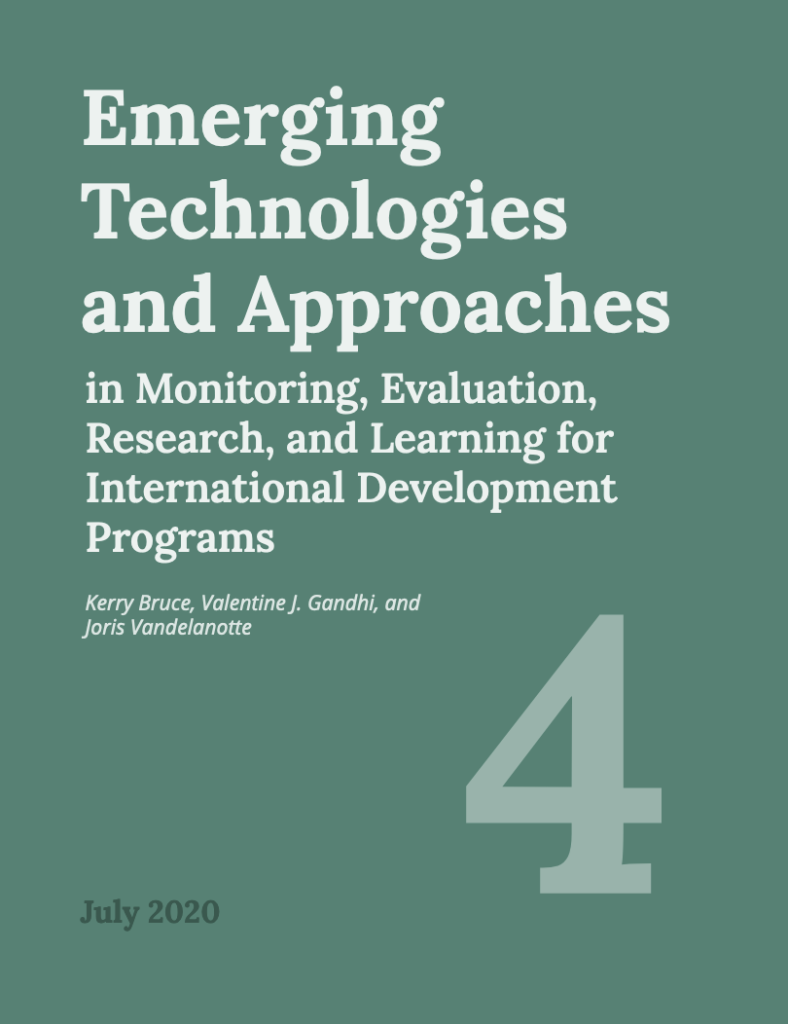Emerging Technologies and Approaches in Monitoring, Evaluation, Research, and Learning for International Development Programs
A new wave of technologies and approaches has the potential to influence how MERL practitioners do their work. The growth in use of smartphones and the internet, digitization of existing data sets, and collection of digital data make data increasingly available for MERL activities. This changes how MERL is conducted and, in some cases, who conducts it.
In this fourth paper in the “State of the Field of MERL Tech” series, we hypothesized that emerging technology is revolutionizing the types of data that can be collected and accessed and the ways that it can be processed and used for better MERL. However, improved research on and documentation of how these technologies are being used is required so the sector can better understand where, when, why, how, and for which populations and which types of MERL these emerging technologies would be appropriate.
The team reviewed the state of the field and found there were three key new areas of data that MERL practitioners should consider. First, new types of data sources – such as application data, sensor data, data from drones and biometrics. These types of data are providing more access to information and larger volumes of data than ever before. Second we found there are new types of systems for data storage. The most prominent of these was the distributed ledger technologies (also known as blockchain) and an increasing use of cloud and edge computing. We discuss the implications of these technologies for MERL. Third, we found new ways of processing data, mainly from the field of machine learning, specifically supervised and unsupervised learning techniques that could help MERL practitioners manage large volumes of both quantitative and qualitative data.
These new technologies hold great promise for making MERL practices more precise, automated and timely. However, some challenges include:
- A need to clearly define problems so the choice of data, tool, or technique is appropriate
- Non-representative selection bias when sampling
- Reduced MERL practitioner or evaluator control
- Change management needs to adapt how organizations manage data
- Rapid platform changes and difficulty with assessing the costs
- A need for systems thinking which may involve stitching different technologies together
To address emerging challenges and make best use of the new data, tools, and approaches, we found a need for capacity strengthening for MERL practitioners, greater collaboration among social scientists and technologists, a need for increased documentation, and a need for the incorporation of more systems thinking among MERL practitioners. Finally there remains a need for greater attention to justice, ethics and privacy in emerging technology.
Download the paper here!
You might also like
-
Hands on with GenAI: predictions and observations from The MERL Tech Initiative and Oxford Policy Management’s ICT4D Training Day
-
When Might We Use AI for Evaluation Purposes? A discussion with New Directions for Evaluation (NDE) authors
-
A visual guide to today’s GenAI landscape
-
Register now for the NLP-CoP Ethics and Governance Working Group Meeting on April 18th
